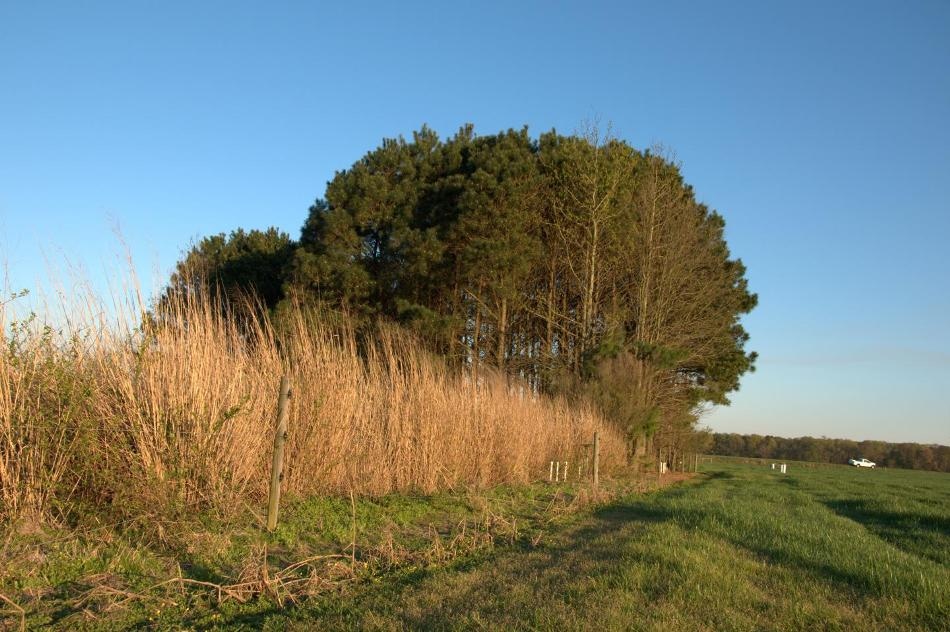Aug 4 2016
 View of tree, switchgrass, and native vegetation buffer plots from the field. (Photo credit Wes Childres.)
View of tree, switchgrass, and native vegetation buffer plots from the field. (Photo credit Wes Childres.)
The surplus nitrogen that flows out from agricultural runoff enters the surface waters, and as a result leads to destructive outcomes. Some of the devastating effects include fish kills and algal blooms.
A twelve year research has now discovered a location in the riparian buffer zones that lies between farmlands and rivers or streams, and can help overcome this problem. Riparian buffer zones are areas of grasses, trees, or perennials.
Riparian buffer zones are nature's hydraulic shock absorbers.
Deanna Osmond, Soil Scientist, North Carolina State University
They are capable of providing habitat for wildlife and also reducing pollution. Stream banks can be held together by trees, which can also provide animals with food. The flow of agricultural runoff can be dampened by these buffer zones. This will help to reduce the amount of nitrogen that reaches rivers and streams.
Osmond and her colleagues want to discover the kind of vegetation required to make these buffer zones efficient to the maximum level in removing surplus nitrogen from runoff.
Their recent study results show that, for selective areas, the composition of vegetation buffer zones is not a matter of concern. They did not observe any significant differences in the efficiency of nitrogen removal from agricultural runoff.
Regardless of the vegetation type, wider buffer zones were observed to be more effective than narrower buffer zones. Width of buffers was an important factor to be considered, said Osmond.
There is a trade-off between productive farmlands and buffer zones.
Deanna Osmond, Soil Scientist, North Carolina State University
Farmers will not be able to cultivate crops in buffer zones.
Earlier studies focused on buffer zones that were at least 30 m wide. In the current study, buffers are either 15 m or 8 m wide. Despite the narrower width, the buffer zones were able to reduce the amount of nitrogen that reached the streams. Most of the time, the 15 meter wide buffers were more than twice as efficient as the 8 meter wide buffers at removing nitrogen from runoff.
Buffer zones can minimize the amount of nitrogen reaching water sources in numerous ways. Nitrogen present in agricultural runoff is mostly in the form of nitrates. These nitrates can be either transformed into atmospheric nitrogen gas by soil microbes, or can be absorbed by plants in the buffer zones.
Some of the previously conducted research work found certain vegetation types to be more efficient at nitrogen removal. This could be because of the differences in stream flow and soil conditions. “Location matters when studying riparian buffer zones,” says Osmond.
Most of the previous studies took place in areas where streams were more connected to their floodplains. Because of this increased connectivity, higher groundwater table is obtained. In high water table areas, nitrates are more efficiently transformed to nitrogen gas.
The current study took place in the upper coastal plains of North Carolina, where there was no connection between the streams and their floodplains. This might have affected the efficiency of various vegetation types removing nitrogen from runoff.
Carbon is necessary for the survival of microbes. The maximum efficiency of this process is obtained when the level of dissolved organic carbon in the soil is high. In this study, the level of dissolved organic carbon at all the measurement sites is less. This could have limited the amount of nitrate removed from runoff and must have equalized the differences between various vegetation types.
While many studies are aiming at measuring the efficacy of buffer zones that already exist, "We started from scratch," says Osmond. This is important because it nearly reflects the real-time scenario where farms do not have preexisting buffer zones. Osmond's study has been tracking buffer zones for 12 years, which is far longer than most of the other studies. The longer time-span can also be considered as a reason for variation in results from some of the previous studies.
Many factors affect how efficiently riparian buffer zones remove nitrogen from runoff.
Deanna Osmond, Soil Scientist, North Carolina State University
Those factors can be better understood by conducting studies in different regions.